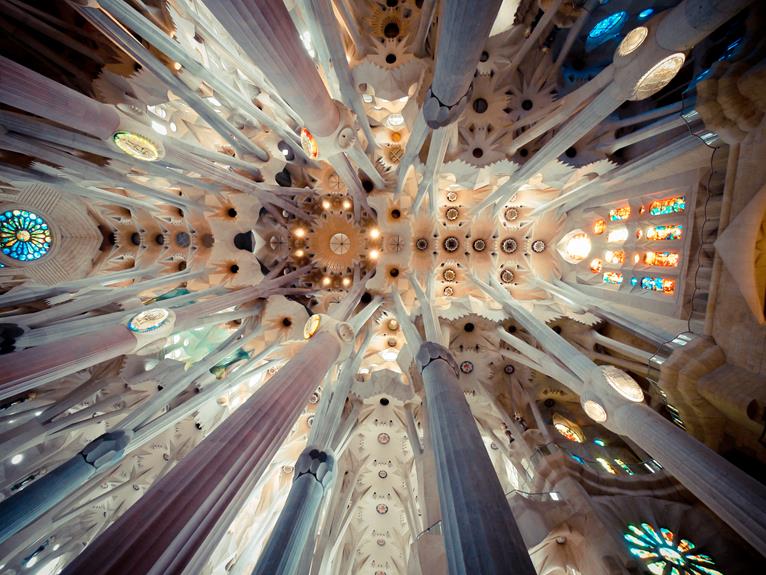
Did you know that Spain is home to 48 UNESCO World Heritage Sites? Join me on an unforgettable journey as we explore some of Spain's most fascinating historical gems. From the enchanting Alhambra in Granada to the iconic Sagrada Familia in Barcelona, we'll uncover the rich history and architectural wonders that have shaped this beautiful country. So grab your passport and let's embark on this incredible adventure together. Spain's UNESCO World Heritage Historical Gems await!
Key Takeaways
Table of Contents
- Alhambra in Granada and Sagrada Familia in Barcelona are both magnificent examples of Spanish architecture, showcasing intricate details and innovative design.
- Toledo is a medieval city that reflects the Christian, Jewish, and Muslim influences in Spain, with its Cathedral, Synagogue, and Mosque.
- Cordoba's historic center, the Caliphate, is rich in cultural heritage and showcases the fusion of Islamic and Christian traditions, with the Mezquita as a significant symbol.
- Segovia is known for its stunning Roman aqueducts and fairy-tale castle, providing a glimpse into Spain's ancient civilizations and folklore.
Alhambra – Granada's Moorish Fortress
I've visited Alhambra, Granada's Moorish Fortress. This magnificent palace complex is a testament to the exquisite Moorish architecture and the profound Islamic influence on Spain's culture and history. As I explored the sprawling grounds of Alhambra, I was captivated by the intricate geometric patterns, the delicate filigree work, and the breathtaking courtyards adorned with fountains and lush gardens. The stunning Nasrid Palaces, with their ornate arches and stucco decorations, transported me back in time to the height of Al-Andalus. Walking through the Hall of the Abencerrajes and the Court of the Lions, I could almost imagine the whispers of the past echoing through the halls. Alhambra is truly a remarkable masterpiece, showcasing the rich heritage of Moorish architecture and the enduring Islamic influence in Spain.
Sagrada Familia – Barcelona's Iconic Basilica
Barcelona's iconic basilica, Sagrada Familia, is a masterpiece of architectural design and a symbol of the city's rich cultural heritage. This architectural wonder, known as Gaudi's masterpiece, evokes a range of emotions in its visitors:
- Awe: The towering spires and intricate facades leave visitors in awe of the sheer grandeur and beauty of the basilica.
- Wonder: The unique blend of Gothic and Art Nouveau elements creates a sense of wonder and curiosity about the genius of Antoni Gaudi.
- Inspiration: The intricate details and innovative design inspire visitors to appreciate the power of human creativity and imagination.
- Reverence: The basilica's status as a place of worship instills a sense of reverence and spirituality in those who enter its hallowed halls.
- Hope: The ongoing construction of the Sagrada Familia symbolizes the perseverance and dedication of the human spirit, leaving visitors hopeful for the future.
Toledo – the Medieval City of Three Cultures
Exploring Toledo's medieval charm, with its rich history and unique blend of three cultures, is an unforgettable experience. As I wander through the narrow cobblestone streets, I am surrounded by the remnants of Toledo's artistic heritage. The city was once a melting pot of Christian, Jewish, and Muslim influences, and this religious coexistence in medieval Toledo is reflected in its architecture, art, and traditions. The stunning Cathedral of Toledo, a masterpiece of Gothic architecture, stands tall as a symbol of Christian dominance. Meanwhile, the Synagogue of Santa María la Blanca and the Mosque of Cristo de la Luz are testaments to the Jewish and Islamic presence in the city. Toledo's ability to preserve and celebrate this harmonious convergence of cultures is truly awe-inspiring.
Segovia – Roman Aqueducts and Fairy-Tale Castle
As I continue my journey through Spain's UNESCO World Heritage historical gems, Segovia captivates me with its stunning Roman aqueducts and fairy-tale castle. Exploring Segovia's architectural wonders has been a truly awe-inspiring experience. The Roman aqueducts, with their intricate arches and impressive height, stand as a testament to the engineering prowess of ancient civilizations. And then there's the fairy-tale castle, the Alcázar of Segovia, with its enchanting turrets and picturesque location. It's like stepping into a storybook.
Segovia's rich cultural heritage and traditions are also evident in every corner of the city. From the vibrant festivals that celebrate Spanish folklore to the mouthwatering local cuisine that tantalizes the taste buds, there's a sense of history and tradition that permeates the air. Walking through the narrow, winding streets, I can't help but feel a connection to the past and a deep appreciation for the beauty that Segovia has to offer.
Cordoba – the Historic Center of the Caliphate
I was captivated by Cordoba's historic center, known as the Caliphate, as I immersed myself in its rich cultural heritage. One of the most remarkable aspects of Cordoba's architecture is the strong Islamic influence. The city's history as an important Islamic center during the Caliphate of Cordoba is evident in the stunning mosques and palaces that dot the landscape. However, the most significant symbol of Cordoba's Islamic past is undoubtedly the Mezquita, also known as the Mosque-Cathedral. This architectural masterpiece combines elements of both Islamic and Christian traditions, reflecting the complex history of the region. Walking through its vast halls, with its mesmerizing arches and intricate details, I couldn't help but feel a deep appreciation for the fusion of cultures and religions that have shaped Cordoba over the centuries.
Frequently Asked Questions
How Long Did It Take to Build the Alhambra?
It took several decades to build the Alhambra. Its exquisite architecture reflects a blend of Islamic and Moorish influences. I'm fascinated by the exploration techniques used during its construction.
Can Visitors Enter the Sagrada Familia During Religious Ceremonies?
No, visitors cannot enter the Sagrada Familia during religious ceremonies. But don't worry, there are plenty of other times to experience its grandeur and appreciate its religious significance.
Is It Possible to Explore the Entire City of Toledo in One Day?
It's possible to explore the entire city of Toledo in one day. I recommend starting with the Jewish Quarter, visiting the must-see museums, and immersing yourself in the rich history and culture of this UNESCO World Heritage site.
How Many Arches Does the Segovia Aqueduct Have?
I was amazed to learn that the Segovia Aqueduct has a staggering 166 arches! Exploring the architectural marvels of this historical gem gives a fascinating glimpse into Spain's history, culture, and engineering genius.
What Is the Significance of Cordoba's Historic Center in the History of the Caliphate?
Cordoba's historic center was a crucial part of the caliphate's history. Its significance lies in the impact of Islamic architecture, showcasing the grandeur and cultural exchange that took place during that time.




Leave a Reply
You must be logged in to post a comment.